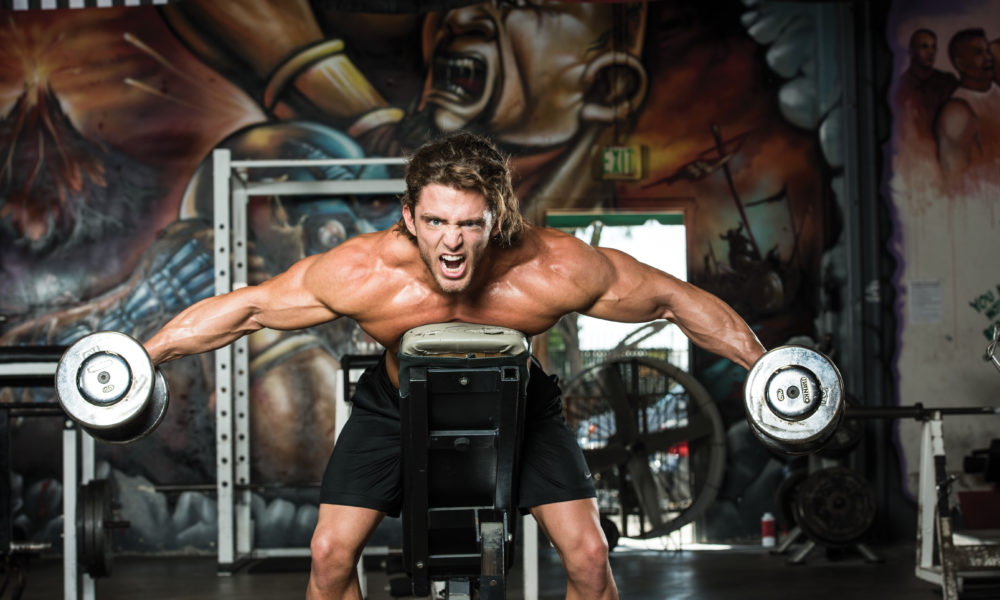

Nine The Hard Way
This ultimate shoulder annihilator will finally get your delts to pop.
By: Redmann Wright.
Today’s world of competitive fitness— from Men’s Physique to Classic Physique to Bikini—places a major emphasis on broad, round shoulders that stand out and wave to the judges. They are the single most important factor in creating a flow that V-tapers into a small midsection and then flares back out to a strong lower body. This superlative asset is prized by both men and women, and is key for those who decide to take their personal fitness to the next level and compete. For others, it simply creates a very primal sexual appeal in the eye of the beholder.
It’s tricky, though, to develop well-balanced, thick muscle bellies in the shoulders. Poorly designed training can lead to injury, imbalance, and lack of strength. A good delt-training plan needs to be well-rounded and holistic, and take any emphasis off of feeding the ego.
There are three distinct parts to the shoulder. A common mistake is to concentrate too much on one area for the duration of your workout. For instance, with a steady diet of Arnold presses, side lateral raises, military presses, and shrugs, the medial deltoid can easily be overworked while the posterior delt is ignored. It is always a good idea to hit a target muscle from different angles, but it is an absolute necessity when it comes to the shoulders.
You can’t discuss the shoulder without a nod to the rotator cuff, the foundation of your shoulder. Unfortunately, almost every time you hear the words “rotator cuff,” they are followed by the word “injury.” Due to either overuse or neglect, a painful rotator cuff has kept more guys out of the gym than Monday Night Football. It’s predominately overhead and rotational movements that exacerbate injuries to this fragile area. Keep that in mind when trying to add weight to the bar, and never allow your ego to dictate the load or volume. In reality, the shoulder doesn’t need much weight to stimulate growth, especially if you’re a relative newbie and your delts have not been conditioned to support and move significant weight for volume.
Lift within your capabilities, and focus on building strength in order to progress in weight load in slow moderation. Be patient, stay disciplined, and maintain motivation. This commitment to your goals will benefit you with injury-free gains in size and strength, and before you know it you’ll have your own impressive X-frame. IM
Triple Threat: Shoulder Anatomy 101
Anterior Head
Function: Flexion, medial rotation, abduction
Location: Front portion of shoulder girdle
Exercise Example: Dumbbell Front Raise
Medial Head
Function: Abduction for internal rotation and assist with transverse movement
Location: Middle/side of shoulder
Exercise Example: Dumbbell Side Lateral Raise
Posterior Head
Function: External and lateral rotation; the posterior head also aids in shoulder extension, external rotation, transverse abduction, and transverse extension
Location: Rear of shoulder, originates on the back of the scapula
Exercise Example: Bent-Over Dumbbell Rear Deltoid Raise With Head On Bench
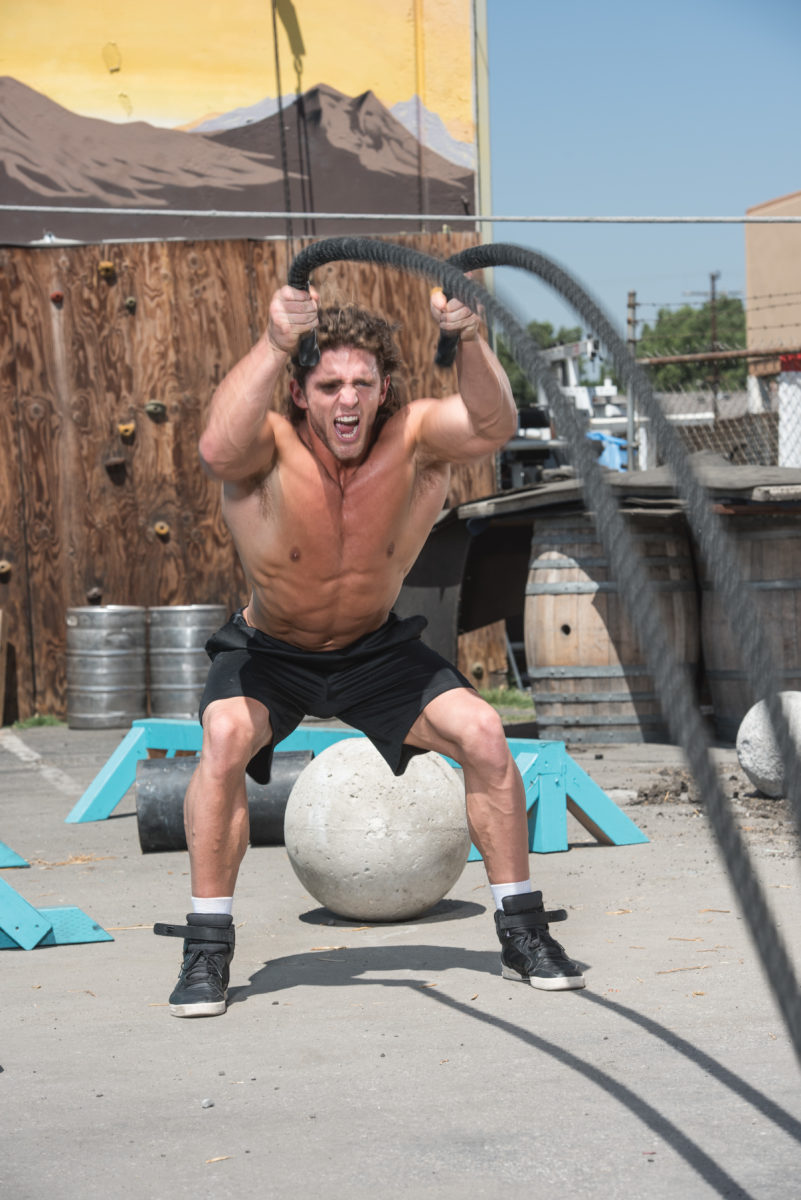
Battle Ropes: Stand with your feet wider-than-shoulder-width apart and knees slightly bent. Grasp one end of the rope in each hand at about waist level. Perform each of the following variations for one minute.
Double Wave: Bring both ropes up and down in the same rhythmic fashion
Alternate Wave: One arm goes high as the other arm goes low in a continuous motion
Low Alternate Wave: Perform exactly like the alternate wave but from a deep squat position
Power Slam: Keep both hands together and bring the rope high and then forcefully pull it to the ground
Cable Lateral Raise: Place a D-handle on a low cable pulley and stand with your right shoulder to the machine. Grasp the handle with your left (far) hand and bring it across your body and up until your arm is parallel with the floor. Your arm should be almost straight and palm facing down. Keep your body erect and stable and your movements smooth. Hold for a beat in the top positon and then lower the weight back down to your waist.
Standing Front Cable Raise: Grasp the D-cable handle, stand with an erect torso. Your body should be facing toward the cable machine. Grasp with either hand, then alternate. You should perform the exercise with a slight bend in the elbow, raising horizontally with your palm facing down. Keep your body erect and stable—no jerking movements! Pull up slightly above your shoulder and hold, then lower back down to your waist side. Breathing technique is to exhale while lowering, pause at the top, and inhale as you return to the starting position.
Reverse Cable Flye: Stand with your feet shoulder-width apart, your torso tilted forward just a bit, and your knees slightly bent. Using two D-handles or simply the ends of two high-pulleys, cross your arms to grasp each handle with the opposite hand. Squeeze your shoulder blades together as you spread your arms apart in a T-pose with a sight bend in your elbows. Hold for a second, then release using the negative pull to re-cross your arms back to the start position.
Lying Lateral Raise: Lie facedown on a bench with a 15-degree incline. Hold a dumbbell in each hand, with your palms facing you and a slight bend in your elbows. Tighten your core and activate your rear delts as you raise your elbows to about shoulder height, keeping your arms parallel to the floor. Hold for a beat at the top and exhale as you slowly lower the weight back down.
Arnold Press: Sit on a bench with a back support. Grasp a dumbbell in each hand, palms facing inside toward you. The start position should resemble the contraction portion of a dumbbell curl, with the elbows bent and dumbbells near your shoulders with your palms facing you. As you extend your arms and raise the dumbbells to the sky, rotate your hands until your palms face forward. Once the arms are fully extended above your head, pause a second at the top. As you slowly lower to the start position rotate your palms back to their original state.
Military Dumbbell Press: Grasp a dumbbell in each hand and sit on a bench with a back support (if you have back problems, a bench with a back support is a must). Hold dumbbells upright at your lower torso while sitting them upright on your thighs—this is your starting position. Raise the dumbbells to shoulder level one at a time using the force of your leg to propel them upward. Exhale and push upward simultaneously until they come close to touching each other. Your palms should be facing outward for the entire rep. Pause for a second at the top and then lower slowly to start position.
Standing Plate Hold: Hold a plate securely in both hands at the three o’clock and nine o’clock positions. Extend your arms, keeping a slight bend in your elbows. The plate should be below your waist. This is your start position. Tighten your core and slowly raise the plate while exhaling until you reach a point slightly above shoulder level. Hold for a second, then lower the weight while inhaling. Keep your upper body solid and stationary without bending at the waist.
Dumbbell Pullover: Position a dumbbell standing up on a flat bench. Lie perpendicular to the bench, with the pad under your shoulder blades and the rest of your weight supported by your feet that are flat on the floor. Keep your head off the bench. Grab the dumbbell and hold it directly over your chest with your arms extended. Slowly move it in an arc motioning back and behind your head until you feel a stretch in your chest. Bring the weight back along the same arc to the start position and hold for a second before beginning your second rep.
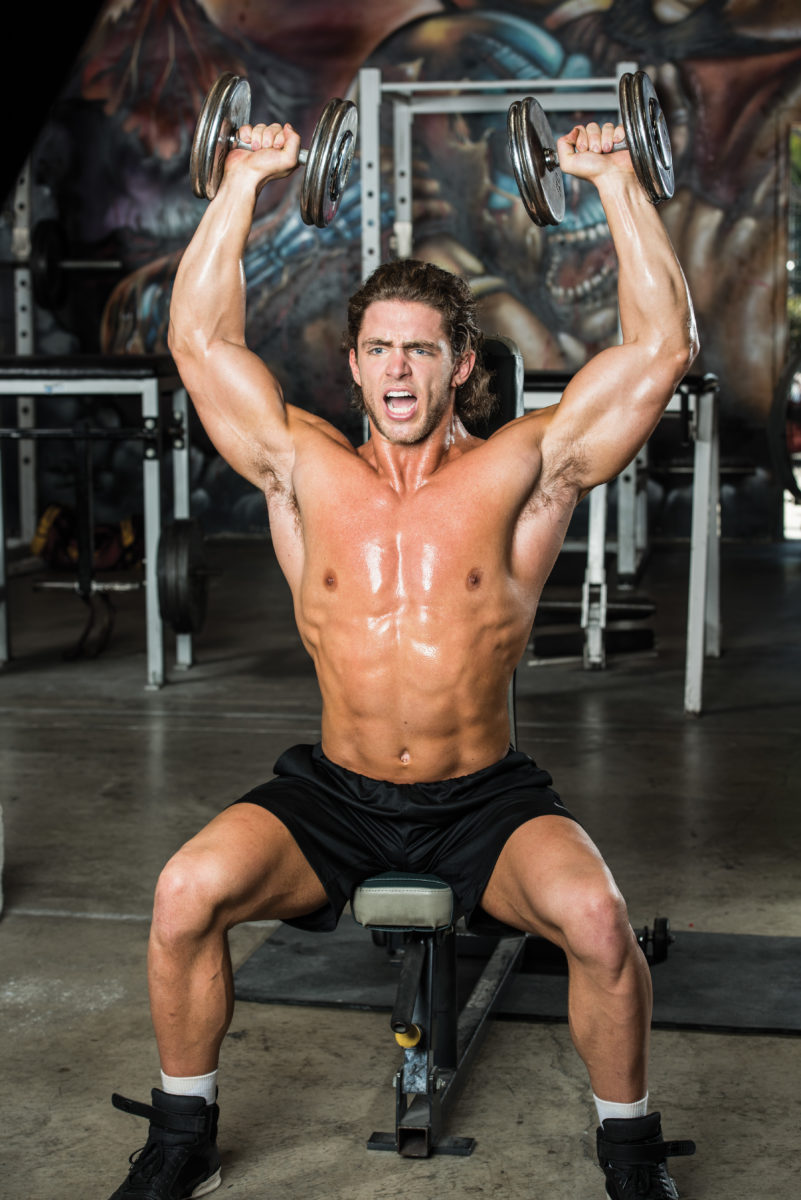
The Workout
Exercise Sets Reps Rest
Battle Ropes (variations) 4 60 seconds 60 seconds
Cable Lateral Raise 3 8-10 90 seconds
Standing Front Cable Raise 3 8-10 90 seconds
Reverse Cable Flye 4 8-10 90 seconds
Lying Lateral Raise 4 8- 10 90 seconds
Arnold Press 3 6 90 seconds
Dumbbell Military Press 3 6-8 90 seconds
Standing Plate Raise 3 10 none
-superset with –
Dumbbell Pullover 4* 10 12-20
*Perform one extra set of this exercise as a “finisher”






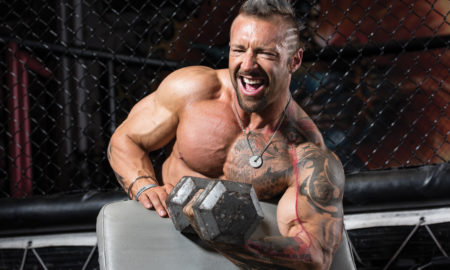
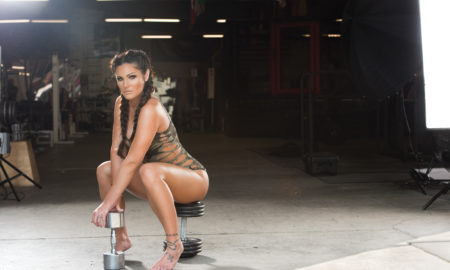







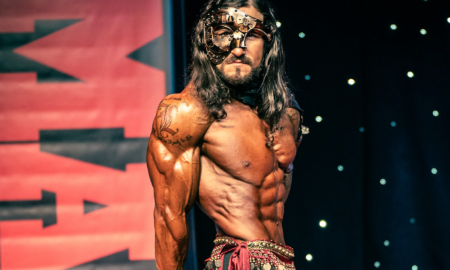

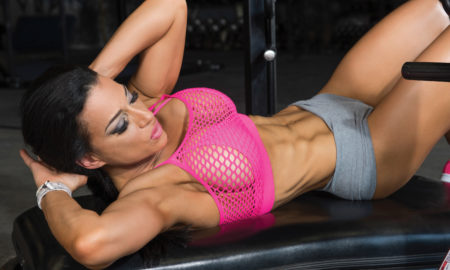
You must be logged in to post a comment Login